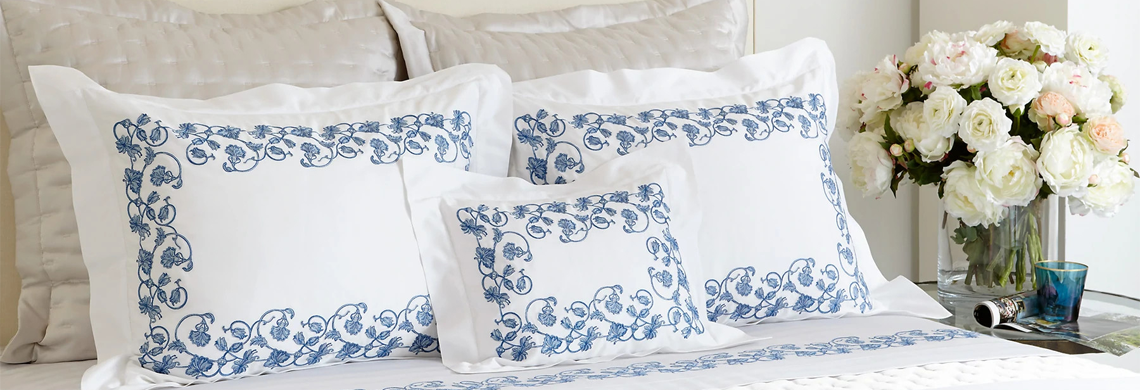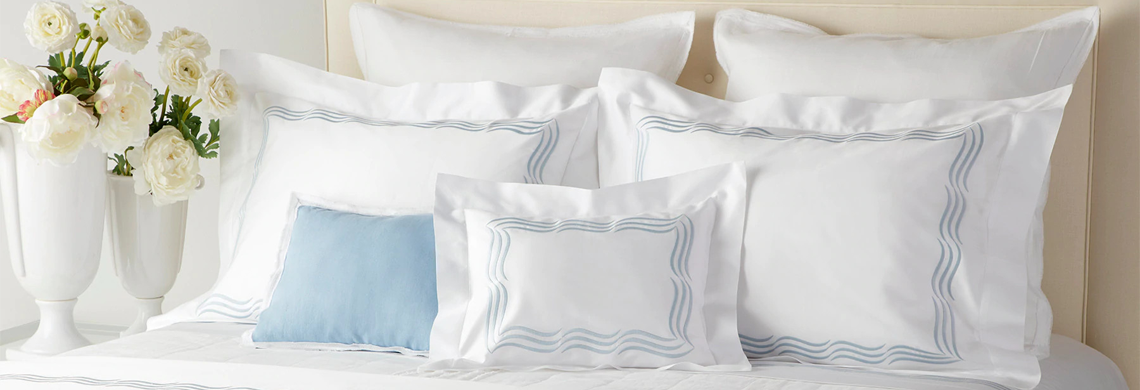What is linen?
Linen is a natural fibre, made from the stalk of a flax plant. It is regarded in Europe as the best quality fabric. Europeans have long favoured linen for their sheeting because of its amazing properties. It softens the more it is used and washed, is extremely durable and lasts decades when cared for correctly. It is not uncommon that European families will pass linen sheets on to the younger generation as an heirloom. Vintage linen is very desirable, it’s soft and the feeling is very hard to replicate by any mechanical process.Benefits of linen
Linen is a very durable fibre and has many benefits over cotton.
– Linen is 30% stronger than cotton
– Has a high moisture absorbency
– Hypo-allergenic
– Highly breathable
– Structurally sound fibre so products keep their shape
– Environmentally friendly – less water and chemicals to cultivate


What is the difference between cotton and linen sheets?
Cotton and linen are two similar products, yet they are quite different in their look, feel and properties. Cotton can be quite soft and silky straight out its packaging, whereas linen tends to be stiffer.
When washed and cared for correctly cotton sheets will last around 3-5 years, before showing signs of wear. Linen fabric, however, is really only starting to shine after 3 years of usage. It becomes softer with every wash and doesn’t break down as fast which is due to the higher moisture absorbency rate of the linen fibres. It is also naturally hypoallergenic which means sweat is less likely to break down the linen fibres, as it would in cotton. Unlike cotton, linen when cared for correctly has the potential to last up to 2-3 decades before needing to be replaced. Hence the reason Europeans prefer to invest in high quality bed linen.
Egyptian cotton is a much finer fibre, and is made from the bols of the cotton plant. The yarn is very fine and able to be woven into a higher thread count fabric. Linen, on the other hand, is a much thicker fibre, but much more robust and durable. The resulting fabric is generally lower in thread count than cotton, but its properties are far superior.
How is linen made?
Extracting the linen fibres from the flax plant is a time consuming process. To harvest the flax plants, they must be pulled from the ground rather than being cut in order to retain the full length of the fibre. After being harvested the plants are left in the field to soften to the point where bacteria and fungi become present. This allows the woody section to start decomposing and make it easier to separate the fibre. The fibre is collected from the plants and then rolled and stored in shelter for 2-3 months, where it continues to soften.
The fibres are then combed to remove excess impurities and shorter fibres. The long fibres (used for bed linen) are slightly twisted and then processed using a ‘wet spinning’ technique in order to achieve a smoother and softer yarn. Alternatively, the short fibres are collected and spun together using a ‘dry spinning’ technique. This results in a stronger and heavier yarn which is ideal for heavy duty uses such as upholstery or heavy apparel fabrics.
The linen yarns used for sheeting are carefully graded and sorted into different qualities ranging from the extremely fine (Como Linen) to a high standard of regular linen (Dublino and Citi Linen). Italian weaving mills select only the finest linen yarns to produce their fabrics with. It is in these Italian mills where generations of weaving mastery become apparent. The Italians are unmatched in their ability to weave and finish the finest fabrics in the world. The techniques used are safeguarded to ensure they cannot be copied.
Why does linen have a lower thread count?
The linen fibre is derived from the middle of the flax plant, so it will be naturally thicker than the cotton bolls from the cotton plant. An average linen fabric used for sheeting has a thread count of between 80 and 150, which would be considered low for a cotton sheet. Cotton percale starts at around 200 thread count, a result of the finer yarns used. It is easier to fit a higher number of yarns into an inch if they are fine cotton. You can only fit so many bulky yarns into that same inch if they are linen, so the results can vary substantially.As previously mentioned the thread count is not an indication of quality, as linen fabric has a much lower thread count but is considered by many to be a far superior fabric quality.
History of linen
Linen was the first fibre used to weave fabric and dates back over 8,000 years. It was first used by Mediterranean civilisations and was then quickly adopted by Europe where it reached high popularity during the medieval times. It was the most readily available fabric and remained the most popular even after the introduction of cotton fabrics by the Arabs during the 1300’s.
Linen remained the fabric of choice until the 18th Century during the Industrial Revolution, when the introduction of spinning machines and the large plantations of North America’s ‘Upland Cotton’ became much more affordable than the traditional linen techniques.
Now because of the laborious time it takes to produce linen yarn, and the manual processes that have to be undertaken, linen has become a higher priced commodity, and considered among many to be a ‘luxury’ fabric.
Where is the best linen from?
Normandy (France) and Belgium are considered the best climates for growing the flax plant. The temperatures and cooler climates are ideal for the cultivation and controlled decomposition of the woody plant.
The processing (spinning of the yarn) is generally done close to the harvesting, but where the linen really comes to life is at the weaving mills. The best weaving mills are undeniably in Italy where knowledge passed down from generation to generation is skilfully used to create the best linen fabrics in the world.






